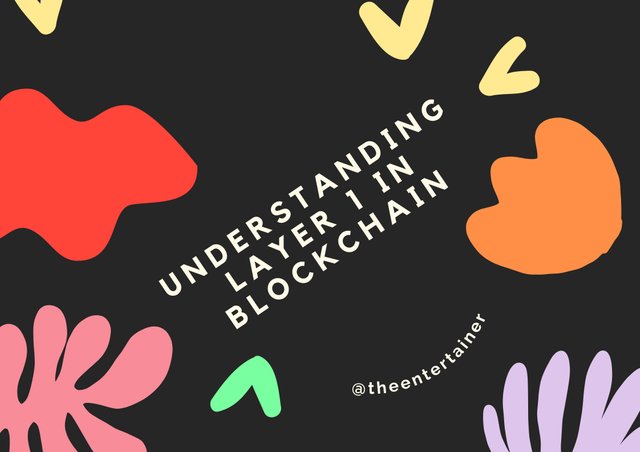Understanding Layer 1 in Blockchain
Introduction
Understanding the architecture of blockchains, projects, and development tools involves delving into layer 1 and layer 2 concepts. These terms elucidate the relationship between platforms like Polygon and Ethereum or Polkadot and its parachains, offering insight into their functioning.
Layer 1 Explained
Layer 1, also known as a base blockchain, encompasses protocols like BNB Smart Chain (BNB), Ethereum (ETH), Bitcoin (BTC), and Solana. They are dubbed layer 1 because they constitute the primary networks within their ecosystems. Unlike layer 2 solutions, layer 1 protocols process and finalize transactions independently on their own blockchain, with each having its native token for transaction fee payment.
Challenges in Layer 1 Scaling
Layer 1 networks often face scalability issues, exemplified by Bitcoin's struggles during high transaction volumes due to its Proof of Work (PoW) consensus mechanism. While PoW ensures decentralization and security, it hampers scalability, leading to slower transaction confirmation times and increased fees. Solutions for layer 1 scaling include increasing block size, changing consensus mechanisms, and implementing sharding.
Layer 1 Solutions: SegWit and Sharding
Bitcoin's SegWit is a layer 1 scaling solution that enhances throughput by altering block data organization, thereby increasing transaction capacity without compromising security. Additionally, sharding, a technique of database partitioning, is employed in layer 1 scaling to boost transaction throughput by dividing the network into shards, each managing a subset of the overall activity.
Layer 1 vs. Layer 2
While layer 1 improvements are challenging due to technological constraints and potential community disagreement, certain use cases necessitate layer 2 solutions, especially for scalability issues. For instance, the Lightning Network, a layer 2 protocol built atop Bitcoin, facilitates fast transactions off the main chain, leveraging its security and decentralization.
Examples of Layer 1 Blockchains
Diverse layer 1 blockchains like Elrond, Harmony, Celo, THORChain, Kava, and IoTeX employ various mechanisms to address the blockchain trilemma of decentralization, security, and scalability. Each network has unique features, native tokens, and focuses, contributing to the blockchain ecosystem's richness and versatility.
Conclusion
Understanding layer 1 and layer 2 concepts is pivotal in comprehending blockchain architecture and exploring new projects, particularly those emphasizing network interoperability and cross-chain solutions. This knowledge forms the foundation for navigating the evolving landscape of blockchain technology.


https://twitter.com/SibanandaMaha14/status/1765074470778310871?t=ciHEB8lYODj_ZeN_Vb-8Rw&s=19